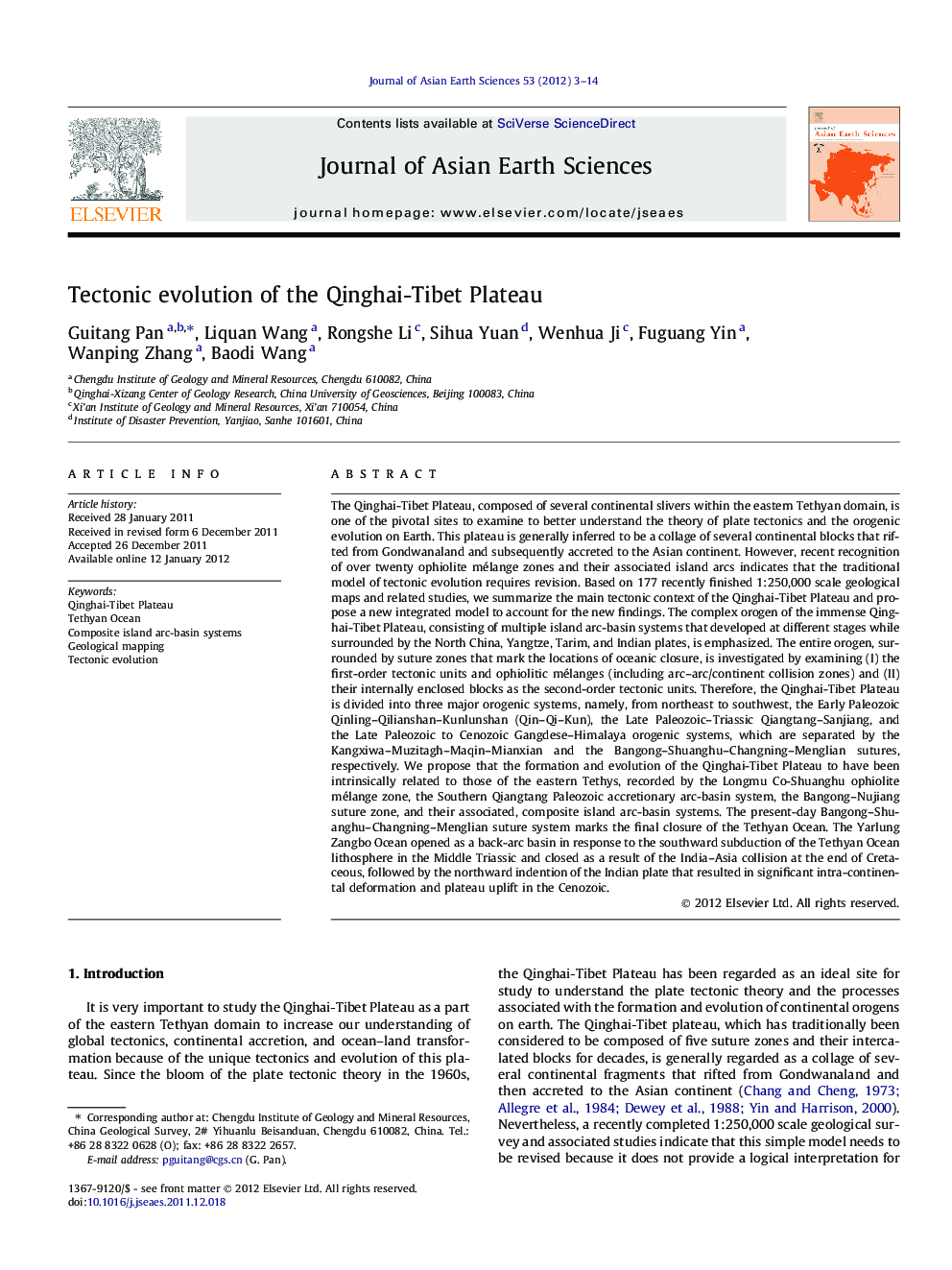| کد مقاله | کد نشریه | سال انتشار | مقاله انگلیسی | نسخه تمام متن |
|---|---|---|---|---|
| 4731376 | 1640411 | 2012 | 12 صفحه PDF | دانلود رایگان |

The Qinghai-Tibet Plateau, composed of several continental slivers within the eastern Tethyan domain, is one of the pivotal sites to examine to better understand the theory of plate tectonics and the orogenic evolution on Earth. This plateau is generally inferred to be a collage of several continental blocks that rifted from Gondwanaland and subsequently accreted to the Asian continent. However, recent recognition of over twenty ophiolite mélange zones and their associated island arcs indicates that the traditional model of tectonic evolution requires revision. Based on 177 recently finished 1:250,000 scale geological maps and related studies, we summarize the main tectonic context of the Qinghai-Tibet Plateau and propose a new integrated model to account for the new findings. The complex orogen of the immense Qinghai-Tibet Plateau, consisting of multiple island arc-basin systems that developed at different stages while surrounded by the North China, Yangtze, Tarim, and Indian plates, is emphasized. The entire orogen, surrounded by suture zones that mark the locations of oceanic closure, is investigated by examining (I) the first-order tectonic units and ophiolitic mélanges (including arc–arc/continent collision zones) and (II) their internally enclosed blocks as the second-order tectonic units. Therefore, the Qinghai-Tibet Plateau is divided into three major orogenic systems, namely, from northeast to southwest, the Early Paleozoic Qinling–Qilianshan–Kunlunshan (Qin–Qi–Kun), the Late Paleozoic–Triassic Qiangtang–Sanjiang, and the Late Paleozoic to Cenozoic Gangdese–Himalaya orogenic systems, which are separated by the Kangxiwa–Muzitagh–Maqin–Mianxian and the Bangong–Shuanghu–Changning–Menglian sutures, respectively. We propose that the formation and evolution of the Qinghai-Tibet Plateau to have been intrinsically related to those of the eastern Tethys, recorded by the Longmu Co-Shuanghu ophiolite mélange zone, the Southern Qiangtang Paleozoic accretionary arc-basin system, the Bangong–Nujiang suture zone, and their associated, composite island arc-basin systems. The present-day Bangong–Shuanghu–Changning–Menglian suture system marks the final closure of the Tethyan Ocean. The Yarlung Zangbo Ocean opened as a back-arc basin in response to the southward subduction of the Tethyan Ocean lithosphere in the Middle Triassic and closed as a result of the India–Asia collision at the end of Cretaceous, followed by the northward indention of the Indian plate that resulted in significant intra-continental deformation and plateau uplift in the Cenozoic.
Journal: Journal of Asian Earth Sciences - Volume 53, 7 July 2012, Pages 3–14